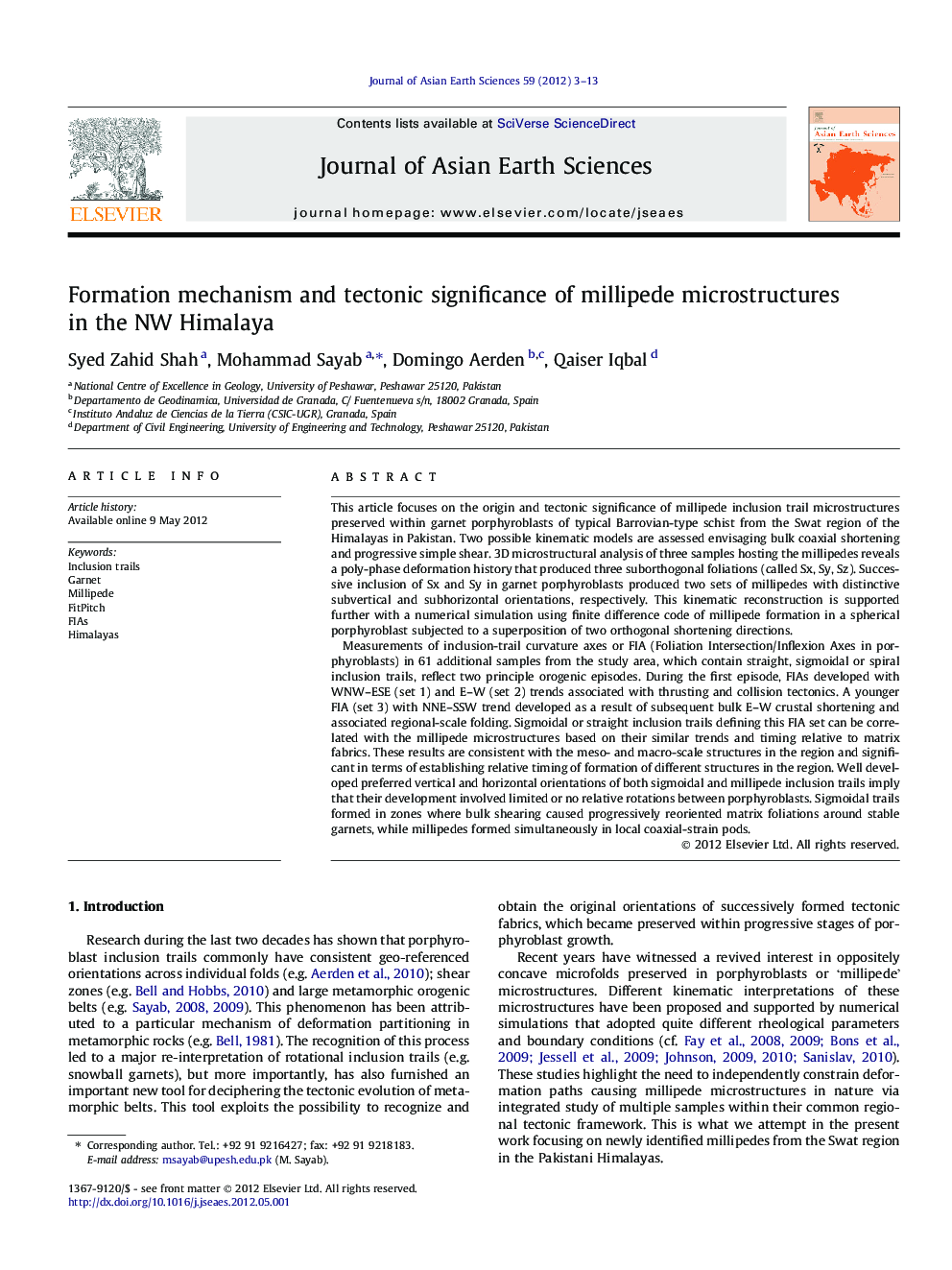| کد مقاله | کد نشریه | سال انتشار | مقاله انگلیسی | نسخه تمام متن |
|---|---|---|---|---|
| 4731351 | 1640406 | 2012 | 11 صفحه PDF | دانلود رایگان |

This article focuses on the origin and tectonic significance of millipede inclusion trail microstructures preserved within garnet porphyroblasts of typical Barrovian-type schist from the Swat region of the Himalayas in Pakistan. Two possible kinematic models are assessed envisaging bulk coaxial shortening and progressive simple shear. 3D microstructural analysis of three samples hosting the millipedes reveals a poly-phase deformation history that produced three suborthogonal foliations (called Sx, Sy, Sz). Successive inclusion of Sx and Sy in garnet porphyroblasts produced two sets of millipedes with distinctive subvertical and subhorizontal orientations, respectively. This kinematic reconstruction is supported further with a numerical simulation using finite difference code of millipede formation in a spherical porphyroblast subjected to a superposition of two orthogonal shortening directions.Measurements of inclusion-trail curvature axes or FIA (Foliation Intersection/Inflexion Axes in porphyroblasts) in 61 additional samples from the study area, which contain straight, sigmoidal or spiral inclusion trails, reflect two principle orogenic episodes. During the first episode, FIAs developed with WNW–ESE (set 1) and E–W (set 2) trends associated with thrusting and collision tectonics. A younger FIA (set 3) with NNE–SSW trend developed as a result of subsequent bulk E–W crustal shortening and associated regional-scale folding. Sigmoidal or straight inclusion trails defining this FIA set can be correlated with the millipede microstructures based on their similar trends and timing relative to matrix fabrics. These results are consistent with the meso- and macro-scale structures in the region and significant in terms of establishing relative timing of formation of different structures in the region. Well developed preferred vertical and horizontal orientations of both sigmoidal and millipede inclusion trails imply that their development involved limited or no relative rotations between porphyroblasts. Sigmoidal trails formed in zones where bulk shearing caused progressively reoriented matrix foliations around stable garnets, while millipedes formed simultaneously in local coaxial-strain pods.
► Millipede microstructures formed during E–W crustal shortening of the NW Himalaya.
► These microstructures can be correlated to FIA 3 of Shah et al., 2011.
► Near-orthogonal relationship and numerical simulations support porphyroblast non-rotation.
Journal: Journal of Asian Earth Sciences - Volume 59, 1 October 2012, Pages 3–13